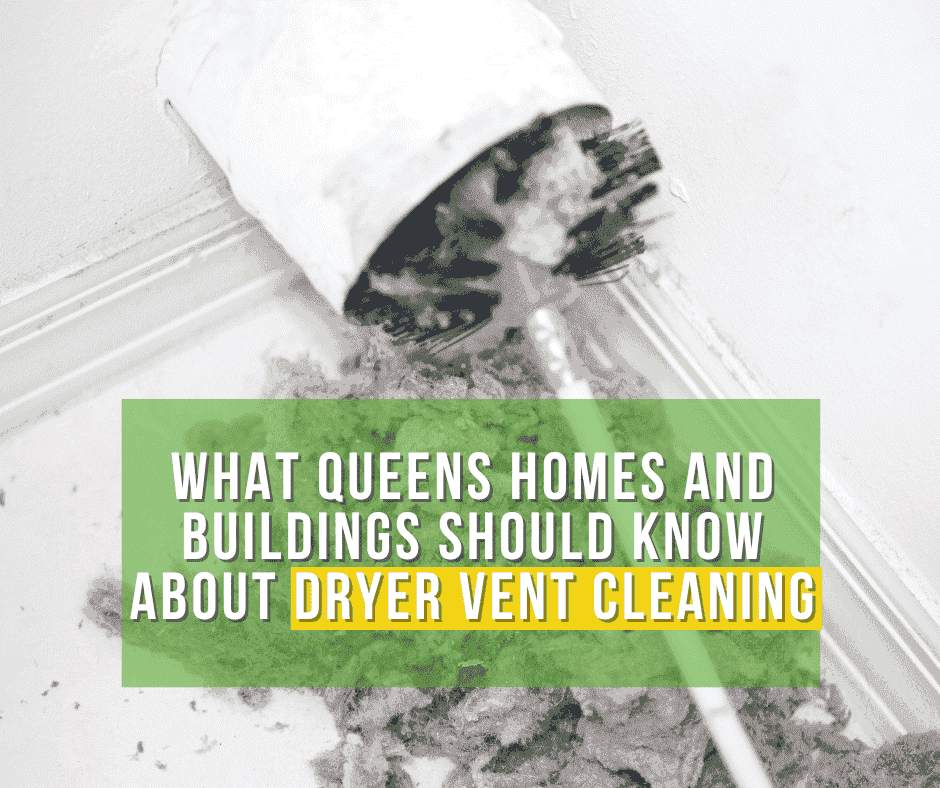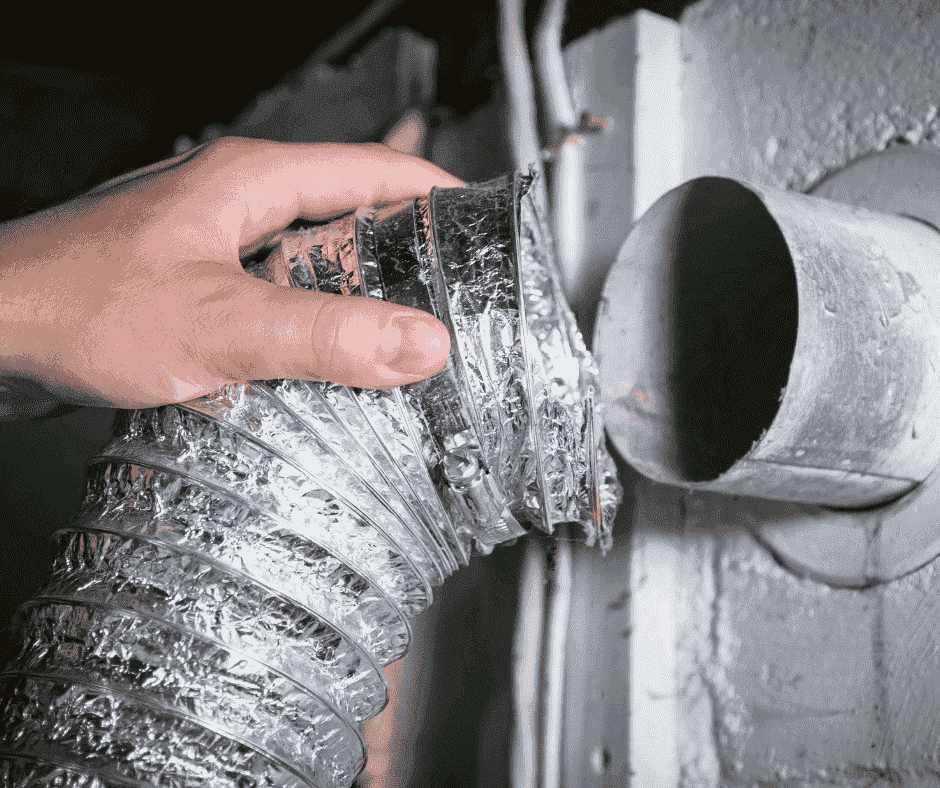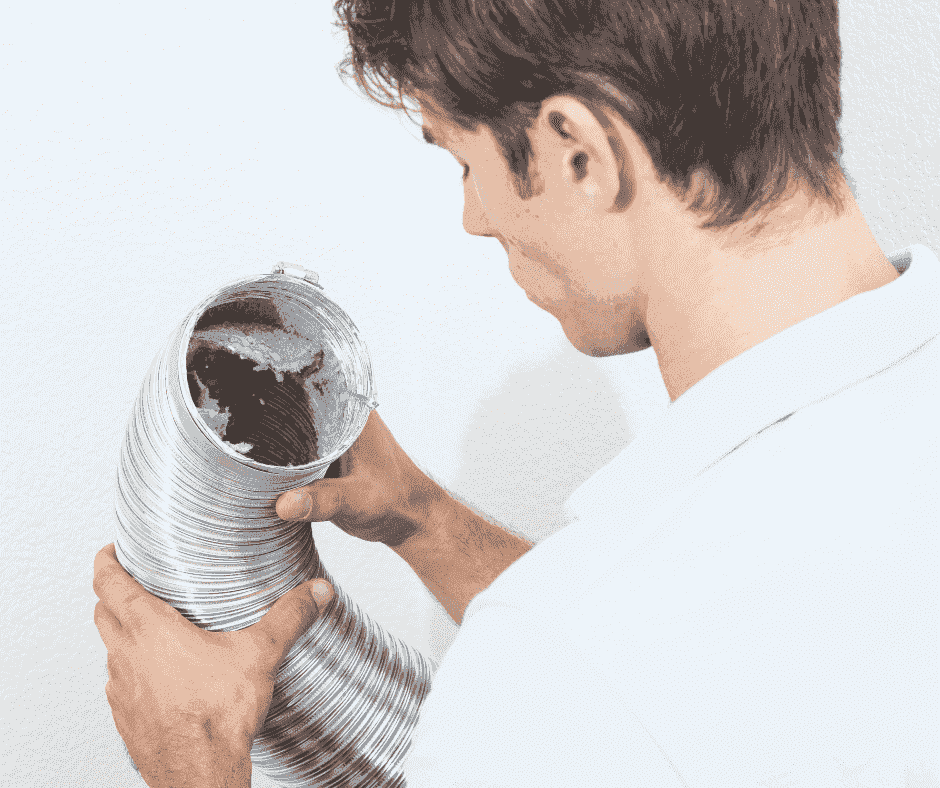
If you live in Queens, odds are your dryer works overtime.
Whether you’re in a family home in Bayside or a walk-up in Jackson Heights, laundry is part of life
—and so is the unseen system behind it: your dryer vent. For over two decades, I’ve worked in
air systems across New York City. And I can tell you this with confidence:
Dryer vents are one of the most overlooked yet essential pieces of home maintenance.
This article isn’t here to sell you anything. It’s to explain what most people don’t know—and wish
they’d known—before their dryer started running hot, slow, or worse, became a fire risk.
What Exactly Does a Dryer Vent Do?

A dryer doesn’t just heat your clothes. It pushes moist air, lint, and heat through a duct (the
vent), usually routed through a wall or out to a roof. That vent needs to stay clear—because if it
doesn’t, several things happen:
- Lint builds up (yes, even beyond the lint trap)
- The dryer overheats
- Drying takes longer
- In worst cases, lint can ignite
And this isn’t rare. According to the U.S. Fire Administration, over 2,900 dryer fires occur each
year, the leading cause of which is failure to clean vents.
Why Queens Residents Should Pay Closer Attention
In a borough like Queens, there are some specific challenges:
- Multi-unit buildings: Shared systems are harder to monitor and clean.
- Older construction: Narrow ducts or outdated materials increase risk.
- Limited airflow: Buildings packed closely together mean less ventilation.
We often work in buildings that haven’t had their venting reviewed in years—sometimes since
installation. And in many homes, we see disconnected ductwork, bird nests in vents, and severe lint clog—all discovered only after residents noticed burning smells or unusually long drying
cycles.
Warning Signs to Watch For
Most people don’t notice issues right away. Dryer vent problems build slowly, so the changes
feel normal—until they’re not.
Here are signs your vent might need professional attention:
- Your dryer takes more than one cycle to fully dry clothes
- The laundry room feels unusually hot or humid
- You smell a faint burning or musty odor while drying
- Lint is collecting behind the dryer or around the vent exit
- You haven’t had your system checked in 2+ years
These aren’t just quirks. They’re early indicators that your system isn’t exhausting properly.
Cleaning Isn’t Just About Safety—It’s About Performance
One of the biggest misconceptions I hear is: “It’s just a little lint—how bad could it be?”
The answer? Bad enough to:
- Add $15–$25/month to your energy bill
- Cut your dryer’s lifespan in half
- Send moisture and heat into your walls or attic
- Worsen asthma or allergies in your home
- In rare cases, cause an electrical or lint-fueled fire
Cleaning isn’t just about preventing the worst. It’s about improving how your home runs.
What Actually Happens During a Proper Dryer Vent Service?

In our field, “vent cleaning” can mean a lot of things. Here’s what it should include:
- Inspection
The technician checks the duct layout, airflow, vent material, and external exhaust. - Debris removal
Lint and buildup is removed using specialized tools—usually high-powered vacuums and
rotary brushes. - Vent clearing
The entire length of the duct, from the dryer to the outdoor exit, is cleared. - System test
Airflow is measured, and the system is checked for blockages, disconnections, or damage.
Anything less is a partial job—and in some cases, may do more harm than good.
How Often Should Vents Be Cleaned?
This depends on use, but a good general guideline is:
- Once a year for typical households
- Every 6–9 months for homes with pets, large families, or high laundry volume
- After any major renovation involving drywall, insulation, or new ductwork
- Immediately if you notice any of the warning signs above
It’s also a good idea after moving into a new home—especially if you don’t know when the last
cleaning was.
Queens Has Its Quirks
Different neighborhoods in Queens face different challenges:
- Forest Hills & Rego Park: Many buildings with older ductwork and tight ventilation
- Astoria & Sunnyside: Condos and co-ops with shared systems
- Bayside & Fresh Meadows: Detached homes where vents can be forgotten entirely
- Jamaica & Richmond Hill: Mixed-use properties with high laundry loads
No matter where you live, if your dryer isn’t running like it used to, your vent might be the
reason.
Final Thought: It’s About Being Proactive, Not Reactive
After working in this industry for decades, here’s what we learned:
- Most dryer vent issues are 100% preventable
- Most homeowners wait too long—because the signs are subtle
- A simple inspection and cleanout can prevent serious damage or even danger
If you only take away one thing from this article, let it be this:
Your dryer vent is not a “set it and forget it” system.
It works hard. It handles heat, moisture, and debris. And like any part of your home, it needs
care—especially in a dense, diverse, and dynamic borough like Queens.
Get in Touch
You don’t need to wait for a warning sign to do the smart thing. A clean, clear dryer vent protects
your home, your health, and your energy bill.
Cismycro Environmental has over 25 years of experience helping Queens residents
breathe easier and stay safer.
📞 212-202-6111
📧 info@cisenv.com
🌐 cisenv.com
Service Across All of Queens
Our certified technicians work throughout Queens, including:
- Astoria
- Flushing
- Forest Hills
- Long Island City
- Ridgewood
- Jamaica
- Bayside
- Woodside
Whether you’re a homeowner in Rego Park or manage a co-op in Kew Gardens, we’re local,
licensed, and ready when you are.
